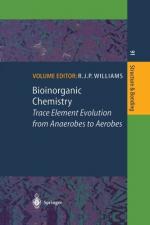|
This section contains 645 words (approx. 3 pages at 300 words per page) |

|
Most living organisms require oxygen to function normally, but a few forms of life exist exclusively in the absence of oxygen and some can function both in the presence of oxygen (aerobically) and in its absence (anaerobically). Examples of anaerobic organisms are found in bacteria of the genus Clostridium,in parasitic protozoans from the gastrointestinal tract of humans and other vertebrates, and in ciliates associated with sulfide-containing sediments. Organisms capable of switching between aerobic and anaerobic existence are found in forms of fungi known as yeasts. The ability of an organism to function both aerobically and anaerobically increases the variety of sites in which it is able to exist and conveys some advantages over organisms with less adaptive potential.
Microbial decay activity in nature can occur either aerobically or anaerobically. Aerobic decomposers of compost and other organic substrates are generally preferable because they act...
|
This section contains 645 words (approx. 3 pages at 300 words per page) |

|


